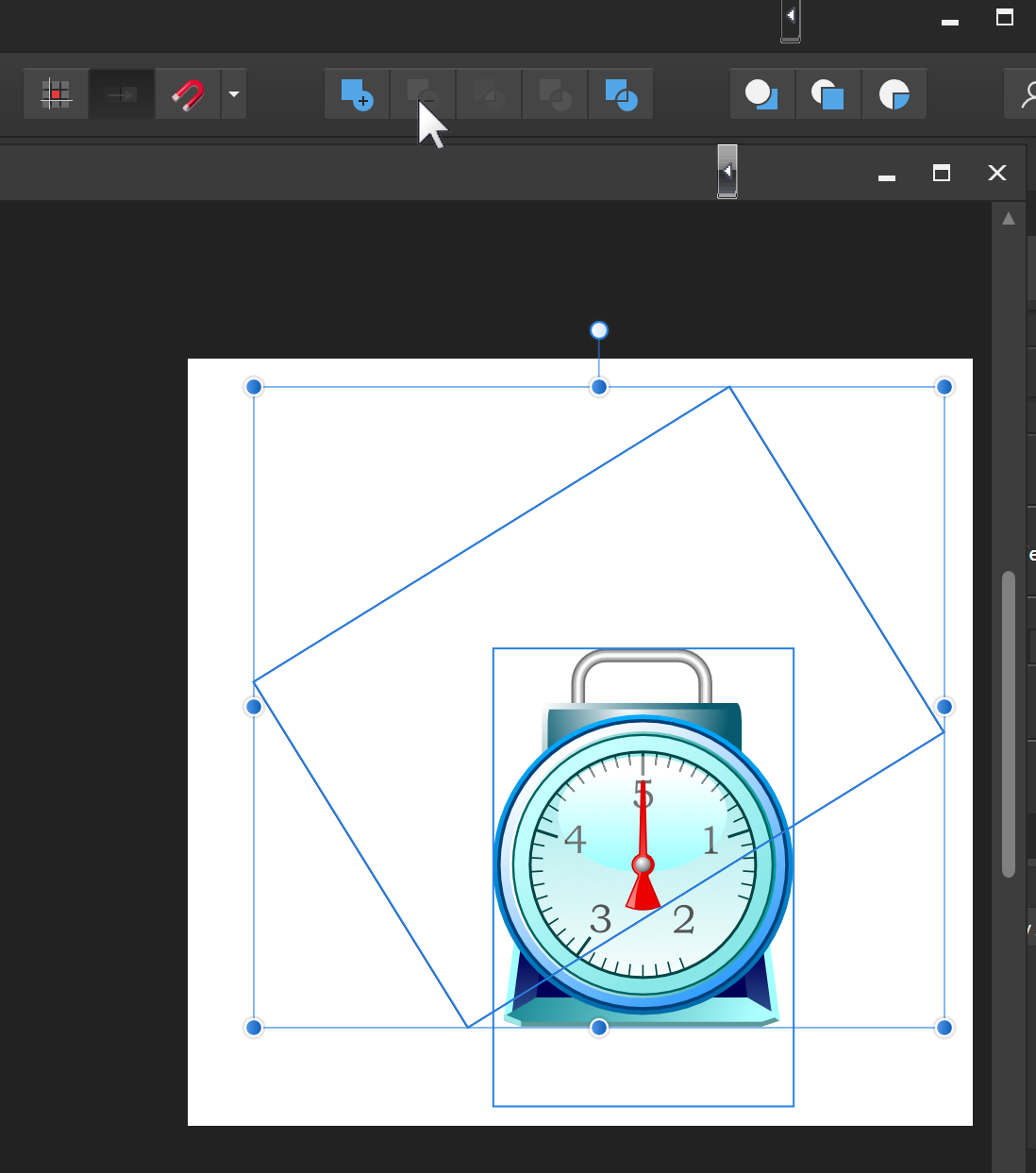-
Posts
61 -
Joined
-
Last visited
Everything posted by David.P
-
I got a rather complex vector shape here, consisting of dozens of (partially) overlapping sub-shapes with different fill colors. How can I cut through the entire object along a line, or alternatively cut a portion out of the object? I have tried it in Designer and Inksc*pe, but the Boolean operations don't work the way I'd expect in both programs. I have attached an example file. How can I slice this object, say, diagonally into two halves? Scales.afdesign
-
Wow, thanks for this link! This is an incredibly easy and fast way of vectorizing bitmaps (i.e. rasterizing, but using vectors) -- particularly ones that are hard to autotrace.
-
Interestingly, one can create seamless vector fills very well in PowerPoint of all things, see attachment. Unfortunately however, these are rasterized with some coarse 200dpi when printed or exported to PDF. PowerPoint Shape with WMF Vector Fill.zip
-
While we wait for Affinity to finally introduce a vector pattern fill feature, attached are a few hatches that can be used to fill shapes or enclosed areas, particularly using Inkscape. These are true tiled hatches, consisting of one line segment and it's bounding rectangle only, which then are tiled to fill any area. Sadly, Affinity Designer doesn't even seem to support such (externally created) vector fill patterns. The issue of seamless vector fills seems to be a bit tricky, as it also has been planned for years in the SVG standard, but still hasn't been implemented. Inkscape Vector Crosshatch Template.svg
-
There are two vector shapes in the attached file that behave strangely during further processing. I can't figure out why though. If these shapes are exported e.g. as SVG and then imported and further processed in PowerPoint, then PowerPoint converts them to bitmaps sooner or later, at the latest when printing from PowerPoint to PDF. This always happens with these two shapes, whereas all other vector shapes are never converted to bitmaps even when printing them to PDF from PowerPoint Do any of you know what strange special property these two shapes have so that this always happens? 'strange' shapes.afdesign
-
Probably because it is dead-easy to implement DXF import and export, since DXF is a plain text file containing nothing but number coordinates for lines, circles and such. You could open a DXF file with Notepad, read those plain text measurements and start drawing your DXF with a ruler on plain paper basically right away.
- 401 replies
-

Live Paint Bucket equivalent
David.P replied to bruised_blood's topic in Feedback for Affinity Designer V1 on iPad
Live paint bucket (and vector fill) URGENTLY needed! Inkscape sort of has both, but lacks too many other things- 51 replies
-
- paint bucket
- bucket
-
(and 1 more)
Tagged with:
-
While we are waiting for a vector fill function to appear in Affinity Designer, does any of you guys have a tip on how to get as close as possible to that ingenious function of PhotoLine: ...i.e. a fill bucket that fills areas of bitmaps with vector fills (!) and creates a new vector layer for this purpose -- totally brilliant. I am aware that probably no other program can do this at the moment, therefore I'm looking for a simple tool that can fill unicolored (say, empty white) areas of bitmaps with bitmap hatch lines, whereby this bitmap hatching however must be renderable with variable width, and with high resolution. Thus, it is not sufficient if the hatch lines are 1 pixel wide, as is the case with most bitmap editors. In other words, how do I fill a uni-colored area of a bitmap with a high-resolution, scalable bitmap hatch -- ideally with variable line width, variable angle, and variable spacing? Thanks for any ideas on which graphics/bitmap editor can do this!
-
Thanks, that sounds like potential good news Dominik
-
Whoa Dominik, that sounds as if there actually is a workaround for vector pattern fills in Designer. Thank you, I shall try this when I need a vector pattern fill the next time. Best regards David
-
This looks great and indeed is a vector pattern fill. However it goes totally over my head how this guy did it (see his video attached below). Thankful for any explanation, David Pattern_test.mov
-
yes yes yes! The possibility to import CAD drawings into Affinity Designer without creating zillions of polyline points from perfect Bezier curves and circles is an absolute dream feature. I currently use an ancient version of Visio (2003) which has the amazing ability to do exactly that, i.e. remove 99% of the polyline points and converting everything back to pure Bezier perfection. Affinity Product Managers, please get moving!
- 401 replies









